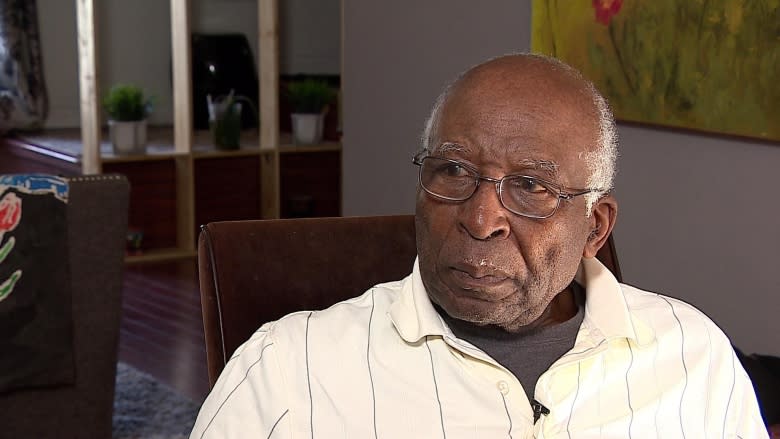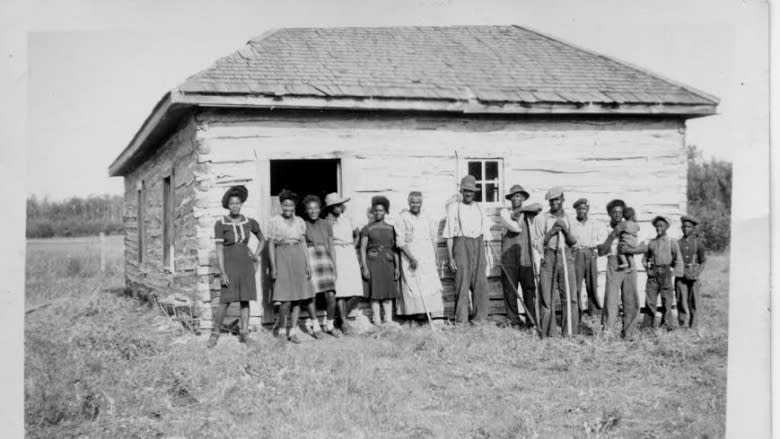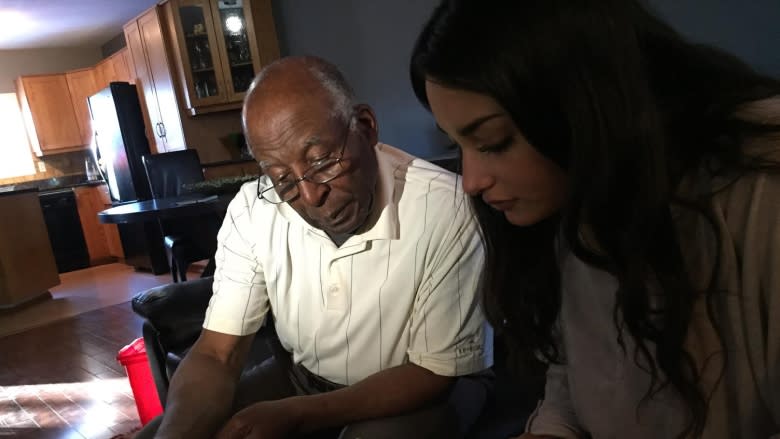Black history in Saskatchewan: Mayes family's story teaches fortitude
The water dripped constantly. That's part of what Murray Mayes remembers of his time living in a leaky sod house in the province's first black settlement of Eldon.
"It would drip, drip, and mom would take a wash pan and put it under that drip," he recalled in a recent interview, sitting in his daughter's kitchen.
Years later, he would shiver every time it rained even when he lived in a shingled house.
Today, the 85-year-old lives in a sod-free home in the town of Elrose, Sask. where life is quiet and he grows strawberries.
His grandparents, Joe and Mattie Mayes, led a group of black families from the U.S. state of Oklahoma who were seeking a better life in the north in 1910.
"I'm thinking that when they got here, there were berries and everything was so nice. But the first winter would be really something because they're not used to that cold weather," he joked.
The Mayes family's story is steeped in slavery, racial segregation, and the fierce desire for emancipation by accessing cheap land in Canada. The family bought a quarter-section of land, about 49 hectares, for $10.
"There were about a thousand of them that arrived here, and they arrived in the Battlefords, Lloydminster district, Maidstone, Eldon," explained historian Bill Waiser.
Not all the newcomers stayed. Some went back to the United States, while others went to Alberta.
A typical pioneer life, in some ways
"Their story is not that peculiar or different from other settlers that might have not made it as farmers," said Waiser.
As such, life was hard, remembered Murray Mayes. Food was scarce as poverty prevailed.
"A lot of poor people, not just the blacks — white people were poor," he said.
However, Waiser noted that the black pioneers faced discrimination in Canada.
He says the Canadian government discouraged black immigration "under pressure from the Canadian public".
For instance, the federal government sent emissaries to American black communities to dissuade their migration to Saskatchewan.
"Canadians believed blacks were America's problem," said Waiser.
In fact, Wilfrid Laurier's government introduced an order in council in 1911, which stated that province was not suitable for black people. It lasted for a few weeks.
"People need to learn that these people made a contribution," added Waiser.
Persistence and fortitude
The black pioneers persisted despite hardships.
In the Eldon district, they built the Baptist Shiloh Church, which has become a provincial historical site, a graveyard, and a school.
Matriarch Mattie Mayes was well-known and renowned as a midwife in the Eldon district.
Murray Mayes, who owned a body shop for 30 years in North Battleford, taught mechanics to about forty people.
He says his daughter Charlotte Williams is the first black president of the Saskatchewan Veterinary Association.
Daughter Lesa Mayes-Stringer is a professional bobsledder who now lives in France.
His son Rueben, perhaps the most well-known of the lineage, was an accomplished football player. In 1986, he was named the National Football League's rookie of the year for the New Orleans Saints. He now resides in Washington and raises millions of dollars for hospitals, according to his father.
"We're all over the world," said Murray Mayes with a smile.
A quest to exhume history
Murray's youngest daughter, nurse Crystal Mayes, said the history of black pioneers is largely unknown.
"We don't hear about the black movement about 100-plus years ago into Saskatchewan. So people don't really know anything about it," she said.
She wants the history of black cowboys to find its way into school books since it is "a part of Saskatchewan history".
Crystal gives presentations in public libraries about black cowboys in the province every year during Black History Month.
"I am very proud of that my great-grandparents were one of the first black settlers in Saskatchewan," Crystal Mayes said.





